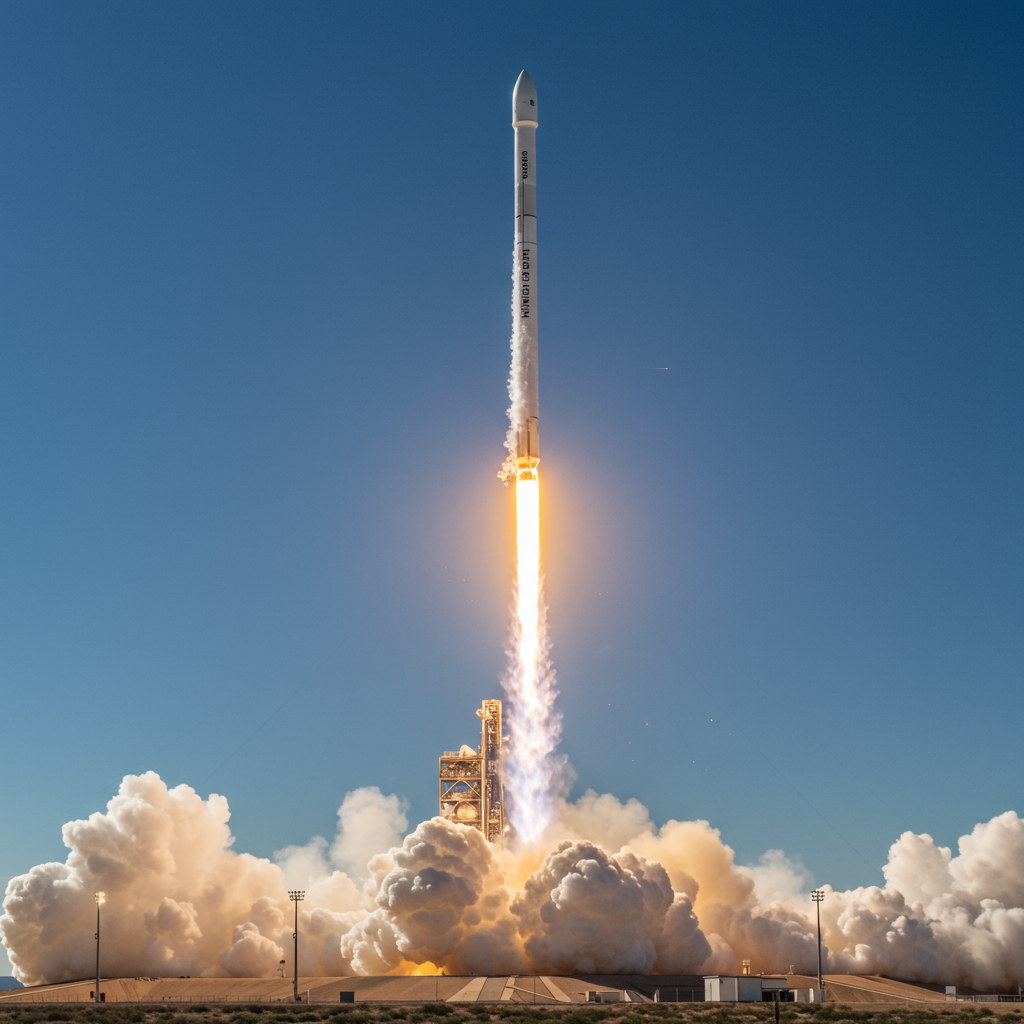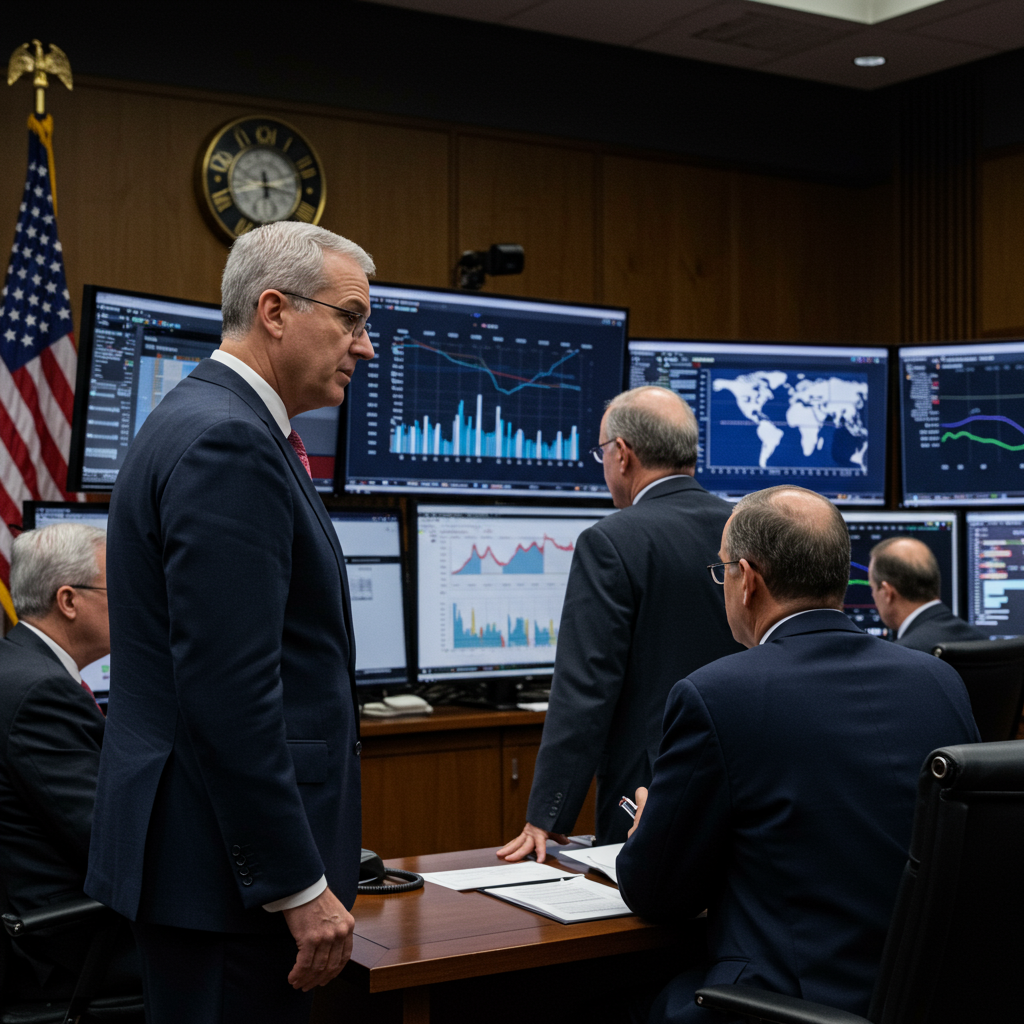Blue Origin successfully completed its latest crewed suborbital spaceflight from West Texas on June 29, 2025, sending six private astronauts on a brief but memorable journey past the internationally recognized boundary of space. This mission, designated NS-33, not only added to the growing number of individuals who have experienced the unique perspective of Earth from above but also achieved several notable milestones for human spaceflight and Blue Origin’s New Shepard program. A diverse crew of six embarked on the roughly 10-minute trip, reaching altitudes high enough to experience weightlessness and witness the planet’s curvature against the blackness of space.
The Historic NS-33 Mission Takes flight
The New Shepard launch vehicle lifted off from Blue Origin’s Launch Site One near Van Horn, West Texas, on Sunday, June 29, 2025, at 9:39 a.m. CDT (1439 GMT). Aboard the fully reusable rocket system were six private citizens: husband and wife Allie and Carl Kuehner, alongside Leland Larson, Freddie Rescigno Jr., Owolabi Salis, and James Sitkin. This flight, the 33rd mission for the New Shepard program overall, was originally planned for the summer solstice but faced weather-related delays, leading the crew to affectionately nickname themselves “The Solstice 33“.
Milestones Reached on This Journey
The NS-33 flight marked several significant achievements in the realm of private spaceflight. For Carl Kuehner, the journey designated him as Blue Origin’s Astronaut #70. More broadly, according to the Association of Space Explorers’ (ASE) Registry of Space Travelers, he became the 750th person in documented history to reach space. This underscores the accelerating pace of human space exploration, driven increasingly by commercial ventures like Blue Origin.
Another profoundly significant milestone of the NS-33 mission was the participation of Owolabi Salis. His journey marked him as the first person born in Nigeria to travel to space, a historic moment expanding the list of nationalities that have achieved spaceflight. The flight also brought the total number of individuals who have flown on suborbital missions globally to 123, highlighting the growing accessibility of brief space experiences.
A Brief Taste of Space: The Flight Experience
The NS-33 mission unfolded precisely as planned during its approximate 10-minute duration. After a powerful ascent, the New Shepard rocket propelled the crew capsule to its peak altitude, or apogee, of 345,044 feet (105.2 kilometers). This height comfortably surpassed the Kármán Line, the internationally recognized boundary between Earth’s atmosphere and outer space, situated at 62 miles (100 kilometers).
Upon crossing the Kármán Line and reaching apogee, the six passengers inside the “RSS Kármán Line” capsule experienced a period of weightlessness lasting approximately three minutes. During this time, they were able to unbuckle from their seats, float within the capsule, and gaze upon the breathtaking sight of Earth’s curvature set against the inky blackness of space. Following this brief but profound experience, the capsule began its descent. The reusable New Shepard booster, designated “Tail 5”, executed a precise, powered vertical landing near the launch site, while the crew capsule returned gently to the West Texas desert under three large parachutes, cushioned by air thrusters for a soft touchdown not far from the booster landing site.
Passengers with Diverse Backgrounds
The crew aboard NS-33 represented a variety of professional fields, showcasing the growing diversity of individuals embarking on space tourism flights. The six passengers included:
Allie Kuehner: An environmentalist and conservationist.
Carl Kuehner: Chairman of a real estate development firm, Building and Land Technology.
Leland Larson: A philanthropist and former CEO of a public transportation company.
Freddie Rescigno Jr.: President of an electrical wire and cable distribution company.
Owolabi Salis: An attorney and financial consultant.
James Sitkin: A California attorney.
Allie and Carl Kuehner’s participation also made them the second married couple to fly together on a Blue Origin New Shepard mission, adding another layer to the flight’s personal significance.
Beyond the Crew: Payloads and Purpose
While the focus of New Shepard missions is often the human experience of space, the flights also carry symbolic payloads. Aboard the NS-33 mission were more than 1,000 physical and digital postcards. These cards were designed by students and members of the public and collected through an ongoing project by Blue Origin’s non-profit foundation, Club For the Future, in partnership with organizations like The Museum of Flight in Seattle and Parkcrest Elementary in Burnaby, British Columbia, Canada. Carrying these postcards to space and back serves to engage and inspire future generations in science and space exploration. As is standard practice for Blue Origin’s commercial flights, the cost per seat for the NS-33 mission was not publicly disclosed.
Context: Blue Origin’s Growing Space Tourism Program
The NS-33 flight is the latest step in Blue Origin’s ambitious vision for making space travel more accessible. Founded by Amazon billionaire Jeff Bezos in 2000, the company aims to enable millions of people to live and work in space eventually, with reusable rocket technology seen as key to lowering costs. The New Shepard system, named after the first American in space, Alan Shepard, is the company’s dedicated vehicle for suborbital human flights.
The NS-33 mission marked the 13th crewed flight for the New Shepard program since it first began flying humans in July 2021. The program has maintained a consistent tempo, with NS-33 being the third human flight since April 2025 alone. Recent notable missions include the NS-31 flight in April 2025, which carried an all-female crew including public figures like singer Katy Perry and journalist Gayle King. Another flight, NS-26 in August 2024, included the youngest woman to cross the Kármán Line and carried NASA-funded science experiments. The program has also flown other distinguished individuals, such as Bezos himself, pioneering aviator Wally Funk, Star Trek actor William Shatner, NFL Hall of Famer Michael Strahan, and Ed Dwight, the first Black American astronaut candidate.
The Business of Space: Cost and Market Context
While Blue Origin keeps its ticket prices private, the burgeoning suborbital space tourism market is known for high costs. Competitors like Virgin Galactic have publicly listed seat prices around $450,000 for a similar brief journey to the edge of space. The undisclosed cost of Blue Origin flights suggests they operate within a similar premium market segment, catering to individuals seeking a unique, high-adventure experience and the exclusive status of becoming an astronaut. Despite criticisms regarding the cost and purpose of such flights given global issues, proponents argue they represent crucial early steps in developing reusable space technology and fostering interest in space, potentially paving the way for more widespread access in the future.
Frequently Asked Questions
How high did Blue Origin’s NS-33 flight go?
The NS-33 flight achieved a maximum altitude of 345,044 feet (105.2 kilometers) above ground level. This height is significantly above the Kármán Line, the internationally recognized boundary of space located at 62 miles (100 kilometers) altitude, confirming that the passengers officially reached space according to established definitions.
Who was the 750th person to ever travel to space?
According to the Association of Space Explorers’ (ASE) Registry of Space Travelers, Carl Kuehner, one of the six passengers aboard Blue Origin’s NS-33 mission on June 29, 2025, became the 750th person in documented history to reach space. The flight also notably included Owolabi Salis, who became the first person born in Nigeria to travel to space.
How many people has Blue Origin flown into space?
Following the successful NS-33 mission with its six passengers, Blue Origin has now flown a total of 70 individuals into space on its New Shepard suborbital rocket system. These flights have been conducted since the company’s first crewed mission took place in July 2021.
Looking Ahead
The successful completion of the NS-33 mission and the milestones achieved, particularly the 750th human in space and the first Nigerian-born individual, underscore the dynamic growth of the private spaceflight sector. Blue Origin continues to demonstrate the reliability of its reusable New Shepard system and is steadily increasing the number of private citizens who have personally experienced the transformative perspective of space. As the company conducts more flights and potentially introduces new vehicles like the planned New Glenn, the future of space access for both tourism and other purposes continues to expand beyond traditional government-led missions.




